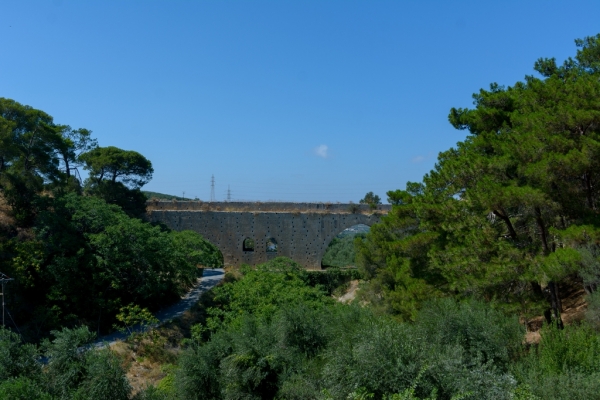The Candia, the current Heraklion always had problem of scarcity. As the 17th century. the town was supplied with water from wells with brackish water, small fountains and water tanks that have been accumulating rainwater. In 1639 we know that there were 1270 wells and 273 tanks. The source water pipeline in the fountain that survives in kornarou square today by capitan Générale Gian Matteo Bembo in 1552-did not solve the problem. The aqueduct, that inside of the city passed from a bridge, in today's trilobi square "Three Arches", supplied the fountain that keeps to our days the name of intendant Morosini in Piazza delle Biade, El. Venizelou square today or on the most beloved "Lions".
The General proveditor Francesco Morosini designed and implemented, with the assistance of mechanical Monnani Zorzi Corner, Raffaello and Francesco Basilicata, the ambitious project of water supply, the construction of a 15 km long aqueduct, which carried the waters of various sources from the northern slopes of the sacred mountain. The project lasted 14 months and was inaugurated on the day of the feast of the Patron Saint Mark, on 25 April 1628.
The fountain has a polylobi tank decorated with reliefs from the marine Kingdom (newts, dolphins, mythological monsters, sea demons) and coats of arms. The water was running from the mouth of four axially placed lions, based on a pedestal in the center of the fountain and supporting marble basin. The original construction of epestefe marble statue of Neptune on a scale greater than the physical, so I often called Fountain monument of giant or Tzigante. Although today is not in operation, kept in relatively good condition, with the exception of the destroyed statue of Poseidon, from either quake, either by human hand during the Ottoman occupation of the town.
